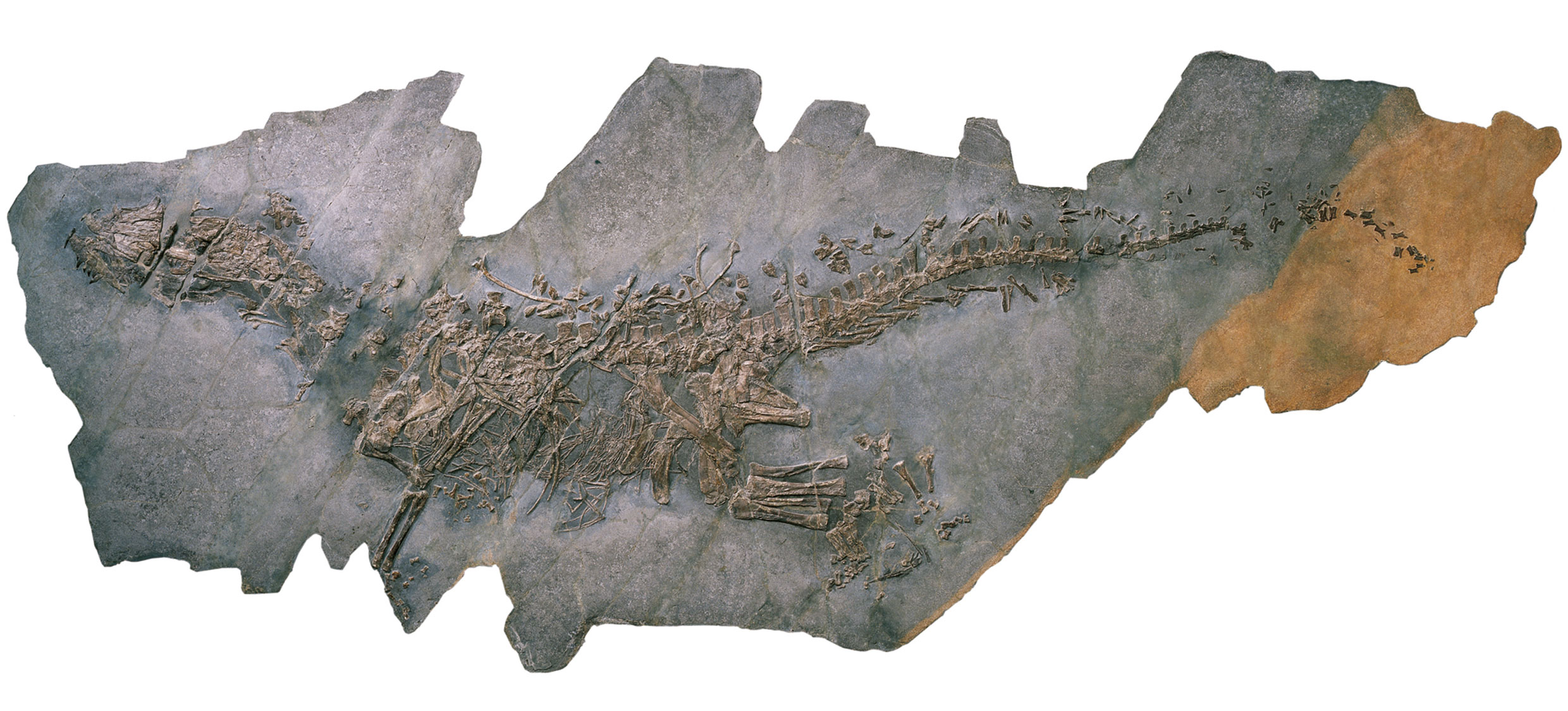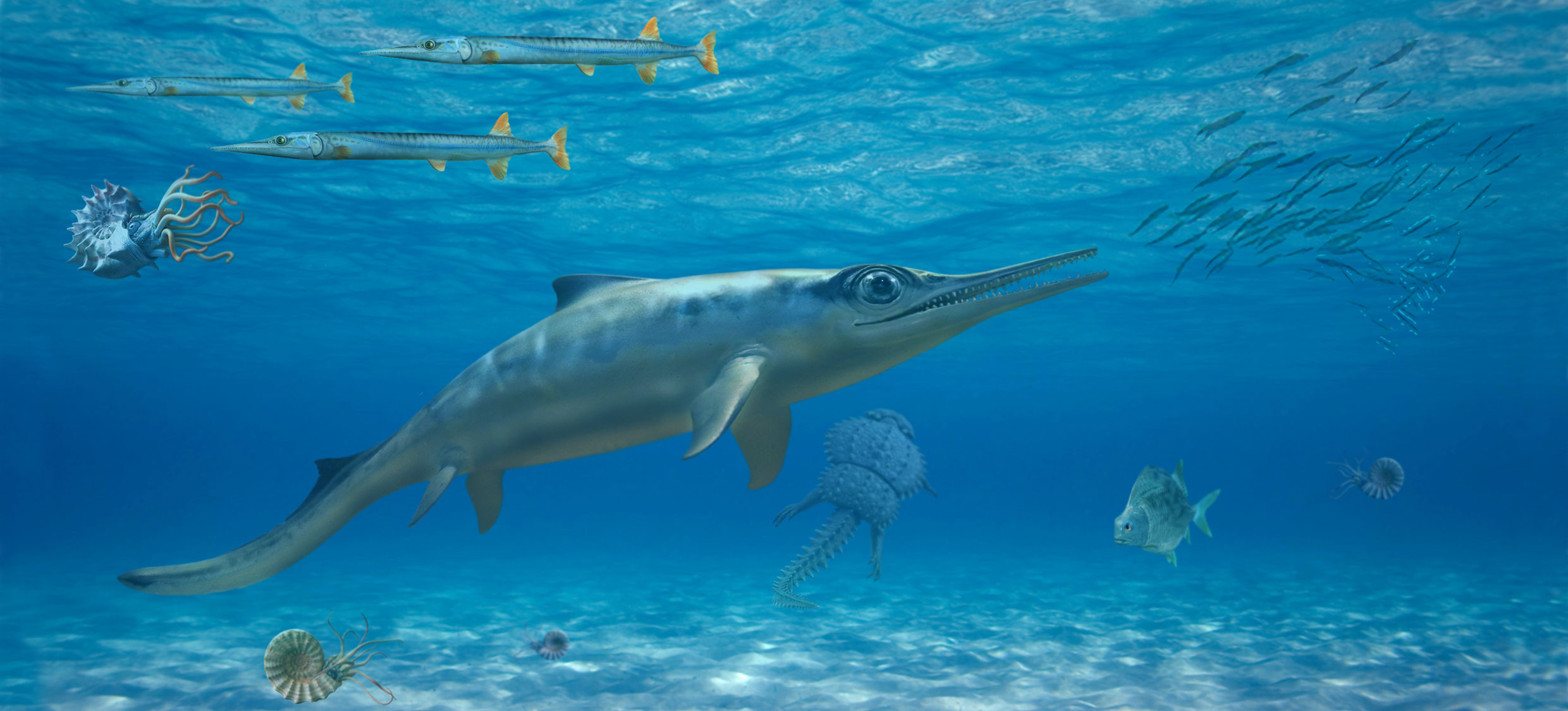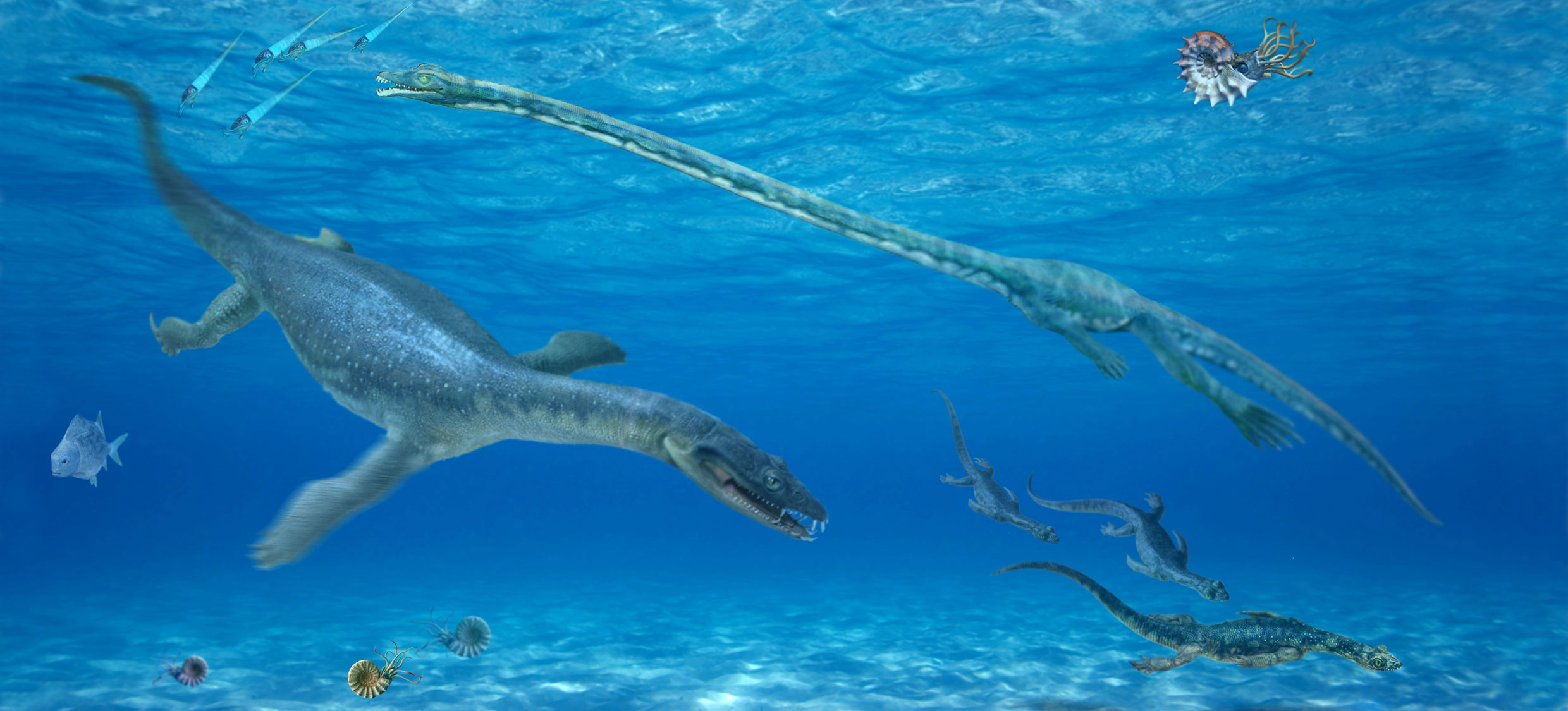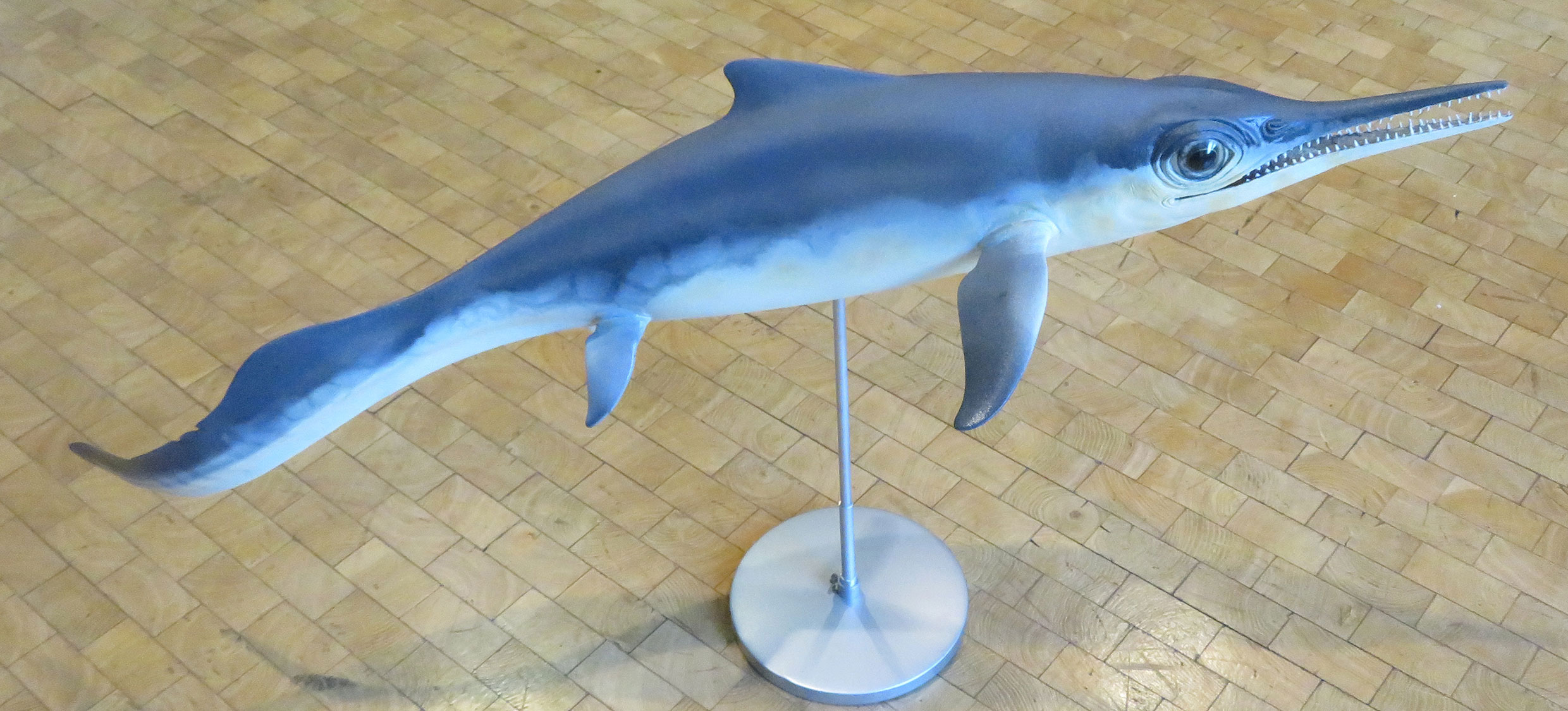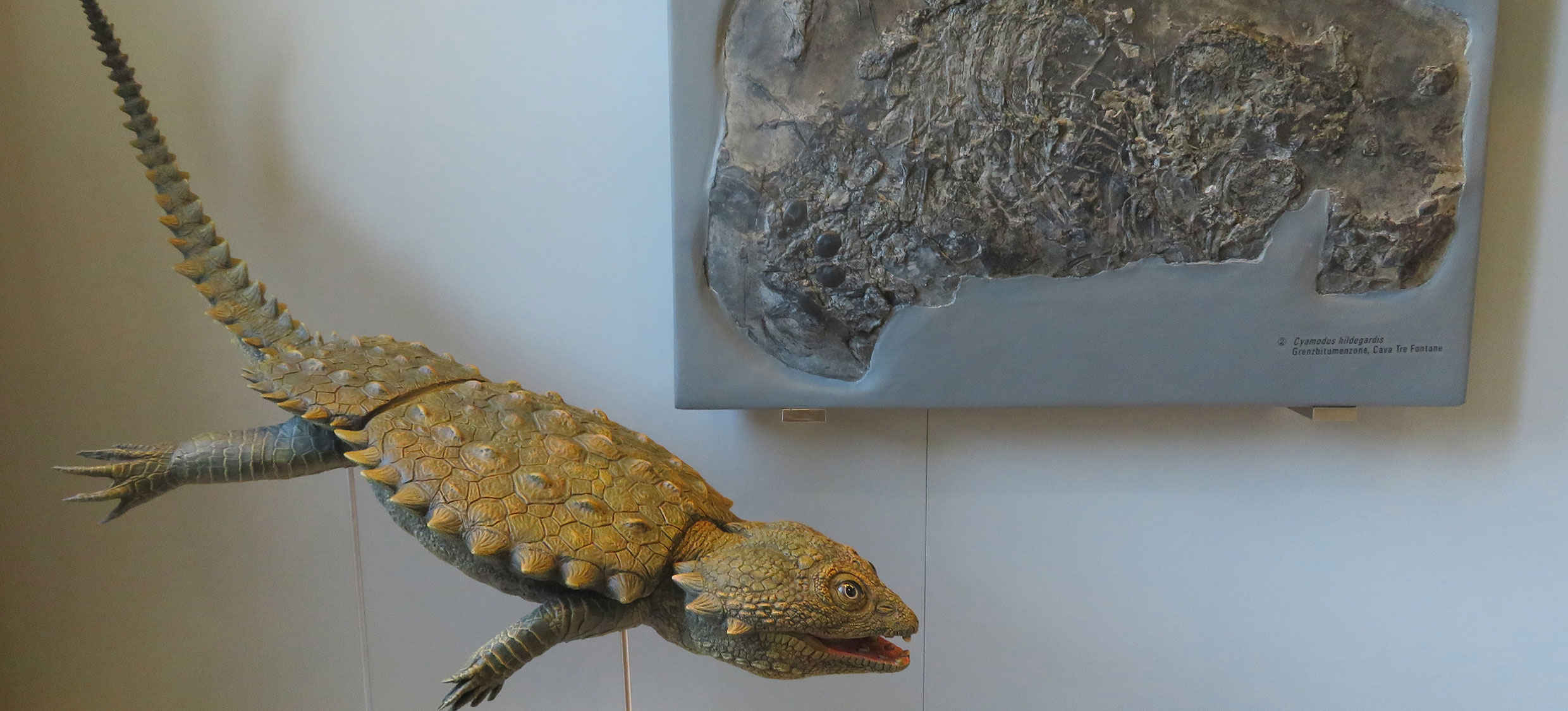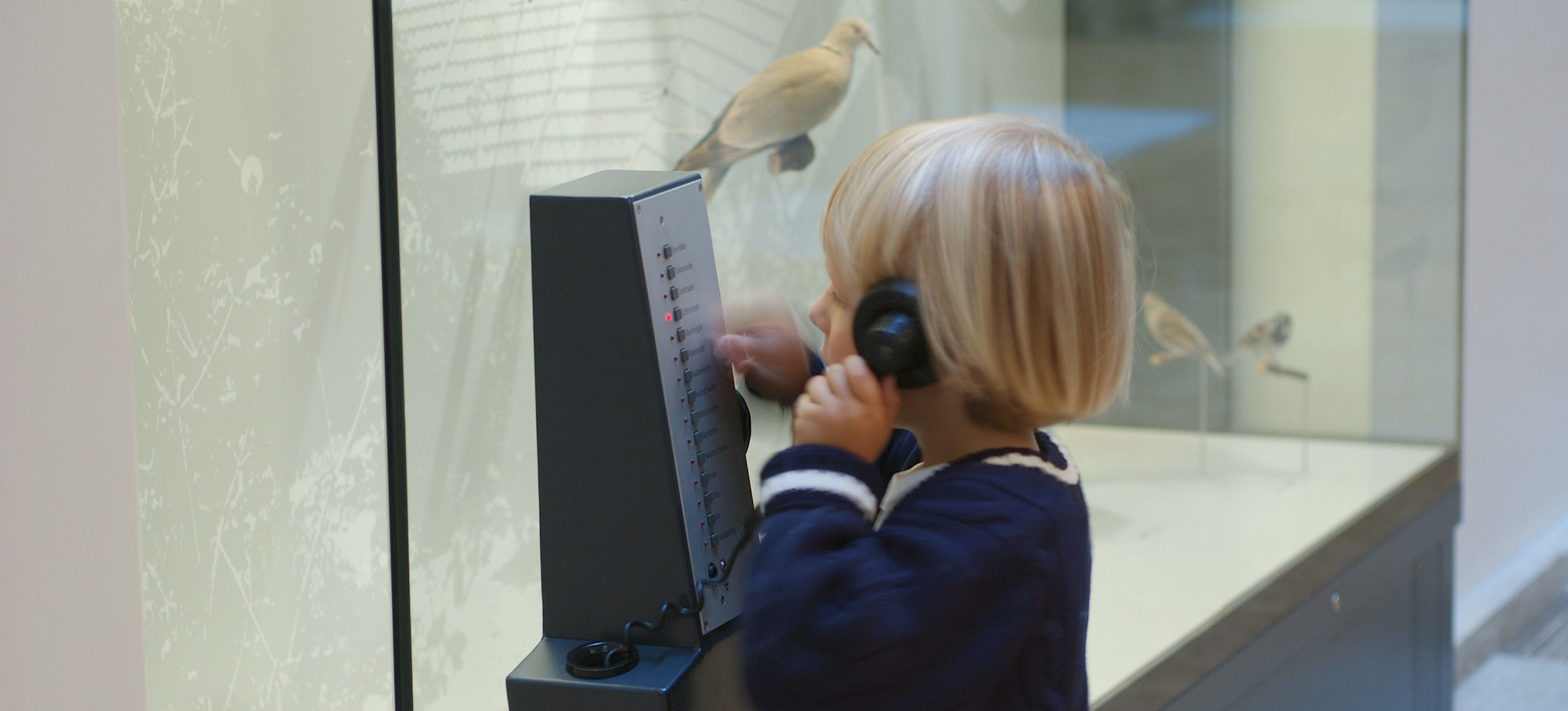Monte San Giorgio
The core of the palaeontological exhibition consists of exceptionally well-preserved and scientifically valuable fossils from Monte San Giorgio (southern Ticino), a unique site that has been on the UNESCO World Heritage List since July 2003.
Marine reptiles
The Ticino vertebrate fossils originate from Middle Triassic sediments of Monte San Giorgio and were recovered during systematic excavations between 1924 and 1975 in the Besano Formation (Grenzbitumenzone) and in the Meride limestones. They were then prepared and scientifically studied in Zurich. Both preparation and their study are still continuing.
During the Middle Triassic period, this area was covered by a shallow marine basin, probably no more than 100 metres deep, which was situated on a carbonate platform in the western part of the Tethys, a former ocean, that has been swallowed in the Alps and the Himalayas. The connection to the open sea was temporarily restricted. The lack of mixing in the water column resulted in oxygen-poor to oxygen-free waters, where the vertebrate carcasses that accumulated were generally not destroyed by scavengers or currents. The fossil material recovered at Monte San Giorgio therefore often comprises completely preserved skeletons, sometimes with fossilized soft tissues, which are unique research objects and thus represent unique exhibits.
Fish
The fish found at Monte San Giorgio include cartilaginous fish (sharks) and bony fish (ray-finned and lobe-finned fish). Most of the bony fish found at Monte San Giorgio are ray-finned fish.
Small and medium-sized species less than 5 cm to about 30 cm in length are common. However, large ray-finned fish up to 1.50 m in length are also known.
The lobe-finned fish are represented by small Actinistia (Ticinepomis), which also include the 1.80 m long coelacanth Latimeria, discovered off the east coast of Africa in 1938 and living in the Pacific Ocean. Coelacanths are particularly interesting because they are the ancestors of land vertebrates (tetrapods).
Reptiles
The reptiles found at Monte San Giorgio are mainly aquatic species that are adapted to marine life:
- Paddle-footed reptiles (Sauropterygia) move by both undulating their bodies sideways and using their large paddle-like limbs. Some people refer to them as the ‘seals’ of the Mesozoic era.
- Ichthyosaurs were the reptiles most adapted to life in water in terms of their body shape. The limbs of ichthyosaurs had evolved into fins. This meant that they could no longer come ashore, e.g. thus they became viviparous instead of laying eggs like their ancestors.
- Placodonts are marine reptiles with turtle-like carapaces and chestnut-shaped teeth, which they used to eat shelled prey like bivalves and ammonoids.
